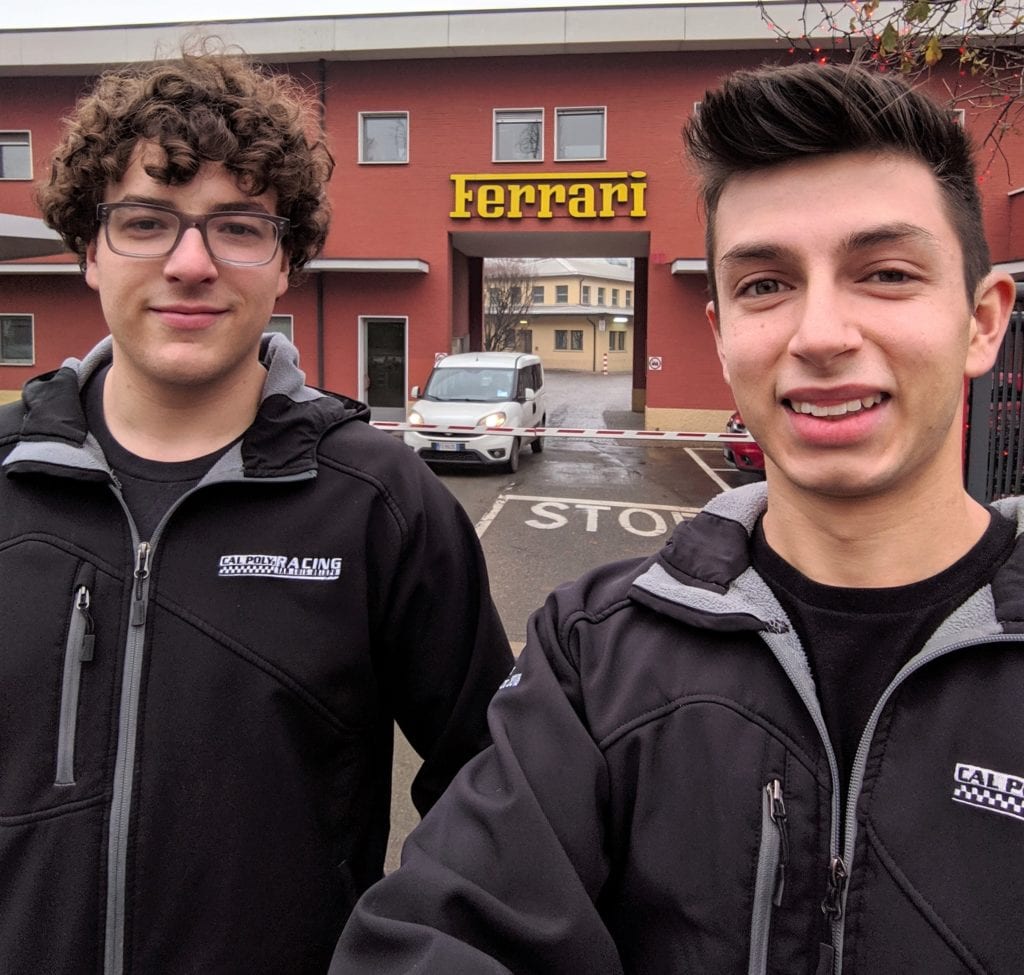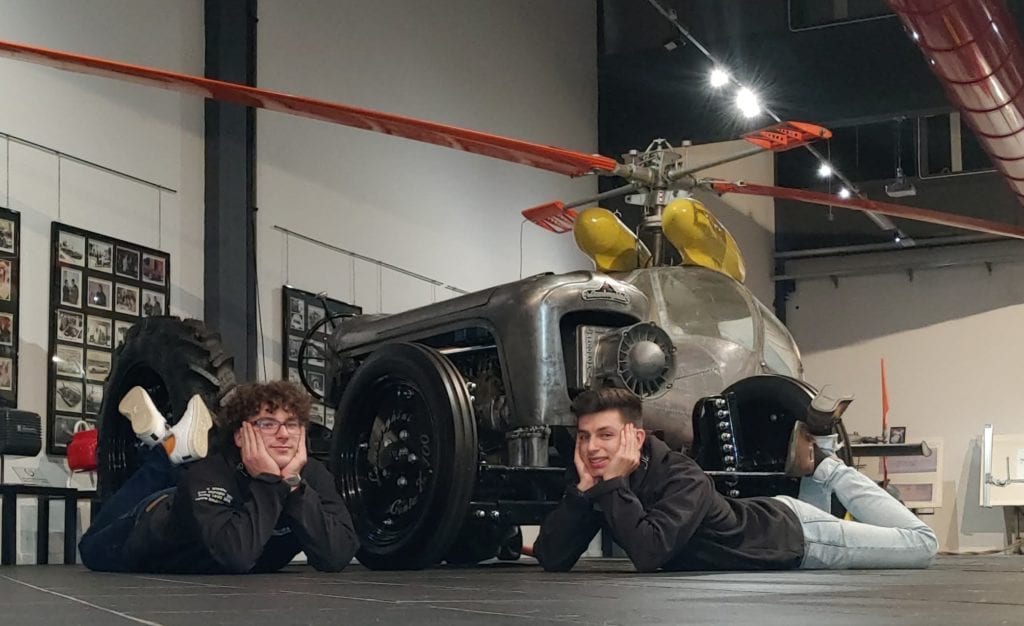Two Cal Poly engineering students recently toured Maserati’s new Innovation Lab in Italy after winning the VI-grade Virtual Formula competition for electric race cars.
Maserati is an Italian luxury vehicle manufacturer owned by Italian-American car company FIAT Chrysler Automobiles. Vi-grade provides software for auto simulations.
Noah Wheeler and Carl Stoye, both mechanical engineering students and members of the Cal Poly Racing team, won the competition by using VI-grade vehicle dynamics software to optimize a virtual formula car to compete in a series of race events.
“The competition has been run for ten years or so now, and this is the first time that an American team has won,” Wheeler said.
Wheeler is from Cleveland, Ohio, while Stoye is from San Francisco.
Over 1,000 students have participated in the competition since it began in 2009. Each year, just two teams are named winners – one for an electrical car and the other for cars with an internal combustion engine. Winners are invited to the annual VI-grade International Conference and the Maserati Innovation Lab in Modena, Italy.
While Maserati has dedicated time and effort into modernizing its center, Wheeler said, it also still had a startup feel, with many young employees.
“The methods they are using to take vehicles from early stage design to then prototype and final production are cutting edge,” he said.
The lab uses VI-grade technology. By applying advanced driving simulation solutions from the start of the engineering process, it is possible to achieve a 50% reduction in time-to-market for new cars, to carry out 90% of all development on the simulator and to reduce 40% of physical prototypes.

“The simulator itself takes up an entire room and is extremely impressive to watch in action,” Wheeler said. “It is capable of replicating vehicle g-forces in every direction.”
VI-grade provided airfare and lodging for the students, who took in some other famous car sites as well.
“When in Italy, Carl and I visited both Ferrari museums, both Lamborghini museums and the Pagani factory,” Wheeler said.
Wheeler visited the Dallara factory and a small racetrack nearby. He also went to Stuttgart, Germany, to visit another student formula racing team and friends who work at HWA, which runs the motorsports program for Mercedes AMG.
Cal Poly Racing teams design, manufacture and test three innovative race vehicles – two formula race cars and a Baja race vehicle — every year and compete in competitions across the United States. VI-grade supports the program with multiple software licenses, Wheeler said.
“We are able to use the software to gain a competitive advantage through simulation both in the design phase and the driving phase,” he said.
That software also helps students after graduation.
“Knowing the software makes us and other Cal Poly Racing students
very desirable to companies utilizing the software,” Wheeler said.


